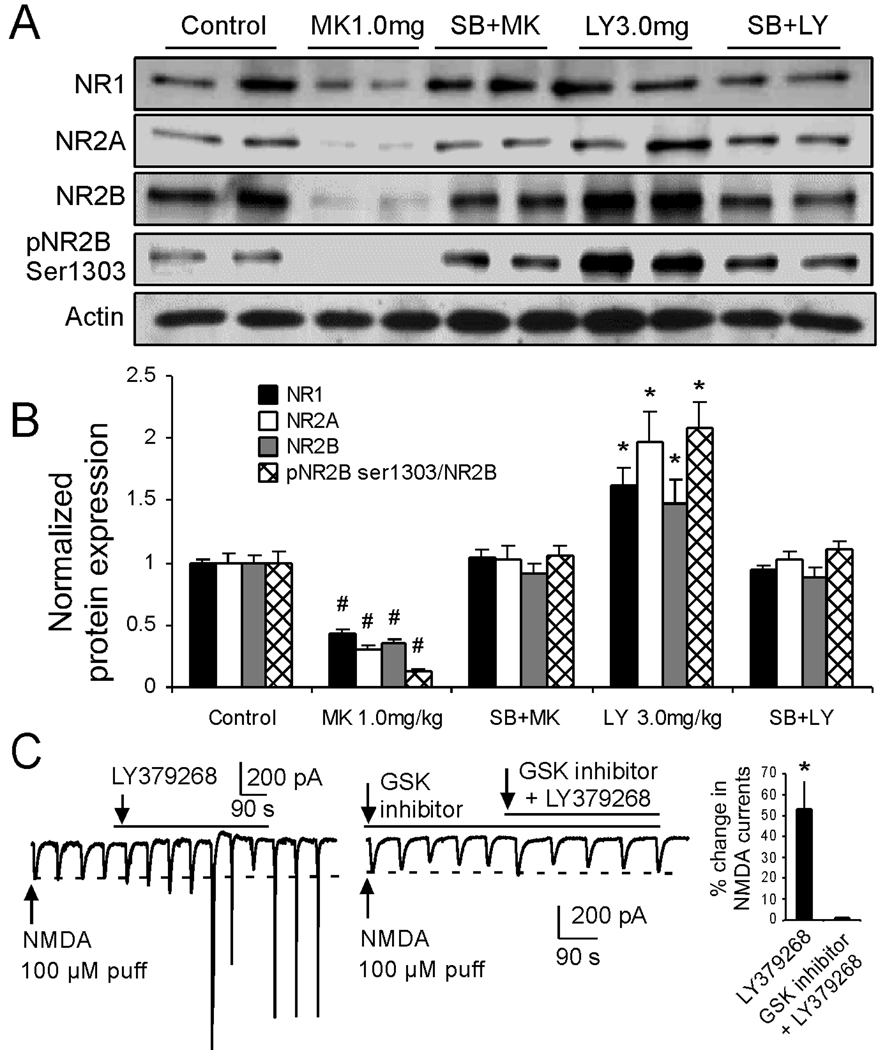Figure 9.
Effects of mGluR2/3 agonists on NMDA receptors are blocked by GSK inhibitor. (A and B) High-dose MK-801 (1.0 mg/kg, single dose) dramatically and significantly decreased the expression of NR1, NR2A, NR2B, and pNR2B Ser1303 to almost undetectable levels (P < 0.01), whereas LY379268 (3.0 mg/kg, single dose) significantly increased the expression and phosphorylation of NR2B, NR1, and NR2A (P < 0.05). Pre-administration of the GSK-3β inhibitor SB216763 (1 mg/kg, i.p, 30 min prior to MK-801 or LY379268) successfully blocked the effects of both MK-801 and LY37926 on the expression of NMDA receptor subunits and pNR2B Ser1303 (P > 0.05). (C) Left panel, puff-NMDA-induced currents (100 µM puff, 0.2–0.3 s, 1–2 psi, every 90 s) were significantly increased by LY379-268 (300 nM bath) and in some cases, spikes were induced by the enhanced NMDA current. Middle panel, selective GSK-3β inhibitor TDZD (10 µM bath) itself did not show significant effects on the puff-NMDA-induced currents but was very effective in occluding the action of LY379268 (300 nM bath) when it was applied prior to LY379268 or co-applied with LY379268. Right panel: summary histogram showing that the NMDA current was significantly increased by about 50% in LY379-268 (* P < 0.05) whereas the average amplitude of NMDA-induced currents in TDZD was almost identical to that in TDZD + LY379268 (0.17 ± 0.06%, P > 0.05).

